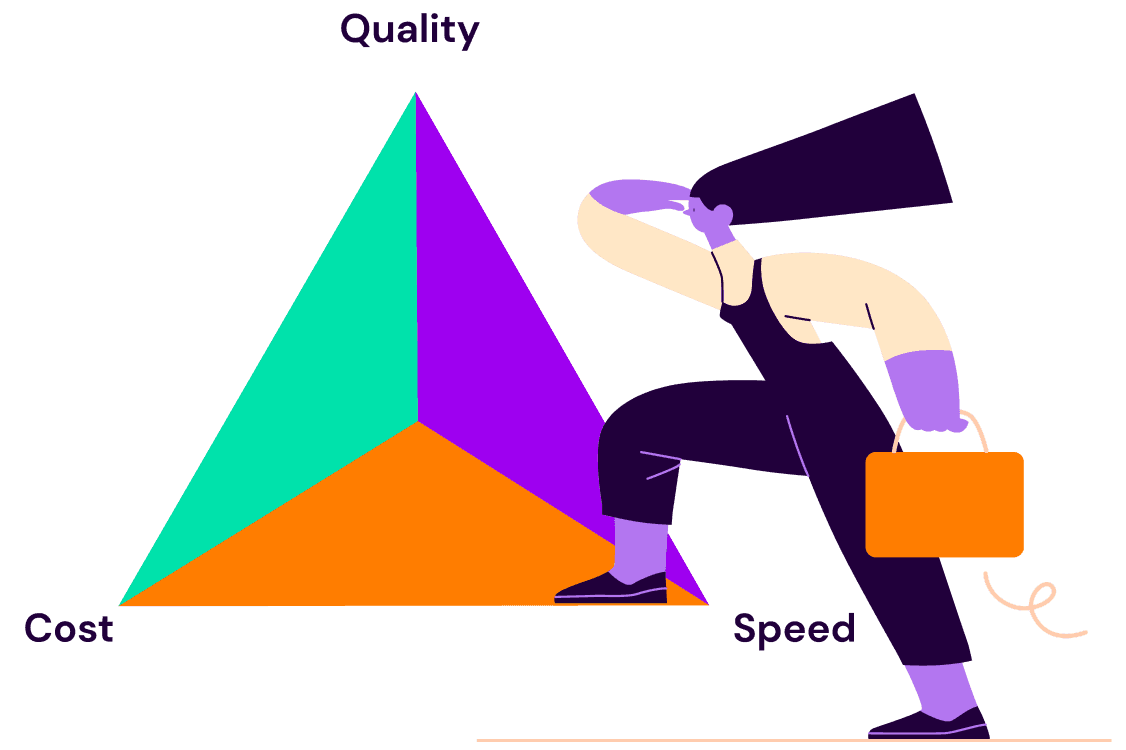
Back to blogs
To uncover talent management trends on the horizon, we asked former CHROs and talent leaders to share their take. Over the last year, these leaders have advised various organizations and HR teams through the challenges of scale and growth.
What patterns have they noticed and how do they point to changes in the future of HR and talent management? They shared that data-driven decision-making, rethinking employee-employer relationships, and holistic talent strategies will be critical for organizational success. We hope these insights help spark how you’ll approach your own talent management roadmap in the year ahead.
1. HR will play a pivotal role in employee AI adoption
With AI here to stay, 2025 may be the year that the workforce loosens its apprehension of the technology, and HR teams are in a unique position to make that happen.
“There’s a lot of fear around AI, but HR can take the lead to diffuse it,” says Betty Thompson, Chair of SHRM Board of Directors and former CHRO at Booz Allen Hamilton. “It will take figuring out how to prepare the rest of the workforce for AI adoption and getting employees more comfortable around the idea of using the tool in their day-to-day work.”
Learn more about Betty's take on preparing for big changes in HR
Read the Q&AHR can lead by example, showing how AI has opened opportunities for value-added work in their team's own daily routine (e.g., handling administrative, time-consuming tasks). Employees should be able to build confidence that AI is there to help them, not replace them.
2. Business leaders will optimize the talent they already have
Most business leaders don’t understand their workforce, but there's a growing curiosity in changing that to reach business objectives more effectively.
“We're going to see a big shift in workforce optimization,” shares Annie Rihn, former VP of Talent at Discord and Zillow. “Business leaders will use their existing talent to pursue growth but in a much more thoughtful and intentional way.”
AI and predictive analytics tools can now provide workforce data that has been historically hard to pinpoint, such as skills inventories, talent gaps, and identifying top performers. Annie emphasizes that this technology will be the catalyst for business growth in the years to come. “Organizations that master predictive analytics to make data-driven decisions will come out on top,” she says.
3. Greater interest in applying data to align business needs and employee career aspirations
HR leaders will start advocating for data-driven people management over intuition-based HR in 2025. Organizations are increasingly seeking to understand their workforce through comprehensive data analysis that aligns individual capabilities and career interests with business objectives and customer needs.
“My hope is that organizations can fundamentally reimagine the employee experience with a more holistic, multi-dimensional view of their workforce,” says Dermot O’Brien, former Chief Transformation Officer and CHRO at ADP. “In the next three to five years, we’ll start seeing breakthrough approaches that connect these dots in new ways.”
Learn Dermot's take on staying positive as HR changes
Read the Q&A4. Practicing intentional networking to drive change across your organization
Transformative change happens through authentic networking—how you understand your professional connections and show up to these conversations. Networking with purpose builds a deep connection through trust and community that can lead to long-lasting business success.
This year, rely on the real-life experiences of talent management leaders in your network to learn what’s working and what’s not across HR. "Community is where challenges and lessons learned are exchanged so you can gather intelligence to support your role as an HR leader when driving change forward,” says David Landman, Ph.D., former talent leader at Goldman Sachs.
5. Reshaping the relationship between employees and employers
“We’ve seen one-sided dynamics in recent years where companies either held all the power or employees did and companies completely catered to them," says Jeff Diana, former Chief People Offer at Calendly and Atlassian. “We’re moving toward a more balanced partnership that respects both organizational needs and individual aspirations.”
Learn more about Jeff's take on recruiting and talent strategy
Read the Q&A6. Leveraging data intelligence to shape holistic people strategies
Talent management is often viewed as a separate pillar from talent acquisition, but organizations are increasingly realizing the importance of the two as complementary when reaching stronger people strategies.
“At SeekOut, we’re seeing organizations use our platform to go beyond basic analytics—they’re using AI-powered insights to understand their entire talent ecosystem,” says Katie Coupe, Interim Chief People Officer at SeekOut. “From identifying untapped talent pools to uncovering development opportunities within their existing workforce.”
Katie says that the key is translating intelligence into actionable strategies that drive business outcomes, whether that’s accelerating hiring for growth or building stronger internal mobility programs.
How to leverage these talent management trends and thrive in 2025
Assess your HR organization's AI readiness and develop an adoption roadmap
Implement data analytics to inform talent decisions
Build stronger talent networks within and across organizations
Review and update your employee value proposition
Break down silos between talent functions
Want to refocus your talent management strategy in 2025?
Download The CHRO Insider’s Workbook for more tips from Betty, Annie, David, Dermot, and Jeff on how to build talent strategies that enable workforce agility and business longevity.
You’ll access on-demand webinars, worksheets, and key takeaways covering topics that many talent teams face, including strategic workforce planning, talent mobility, and finding clarity in an evolving DEI landscape.
See us in action
Learn how SeekOut unifies people data to help organizations reach their talent goals
Request a demo




